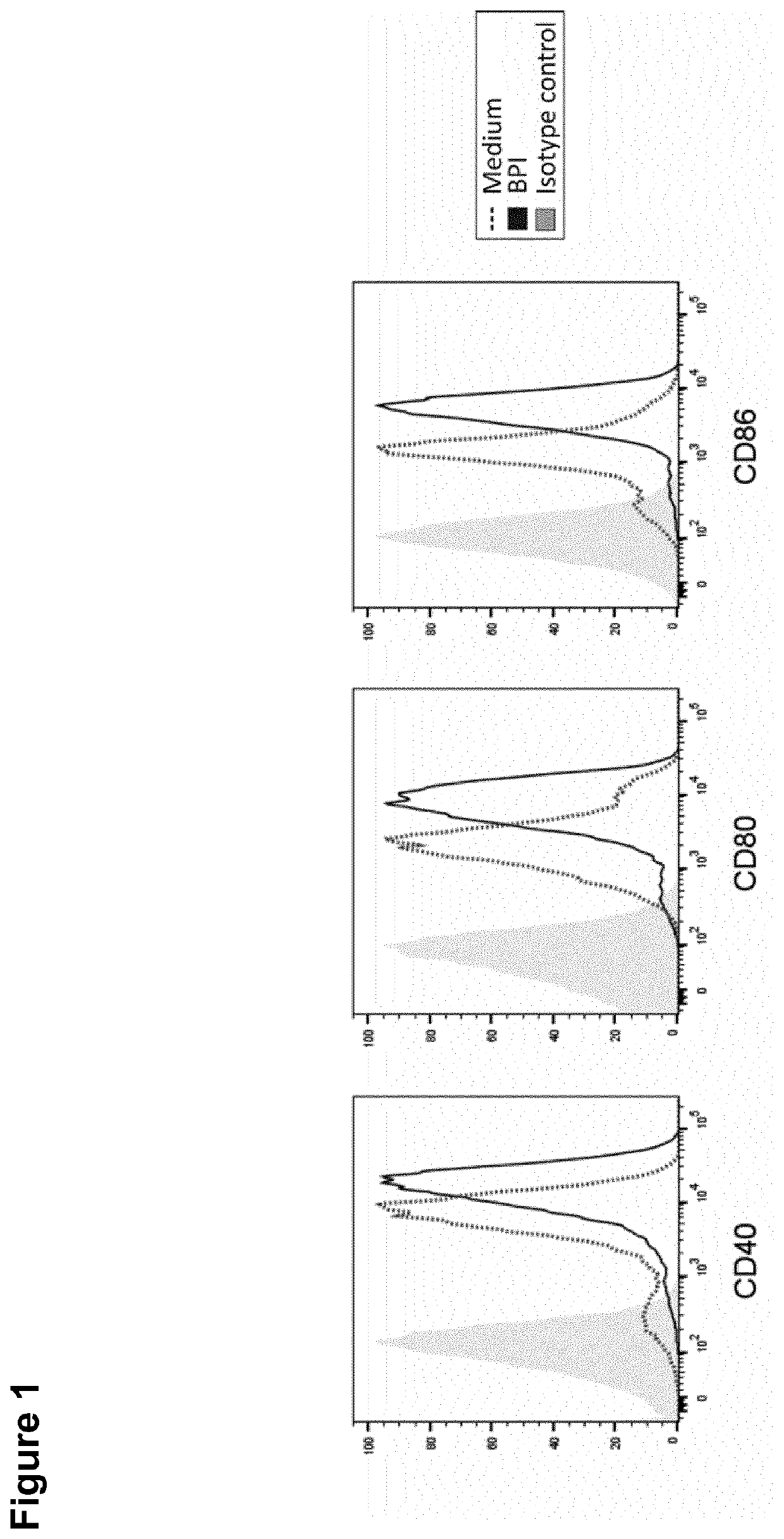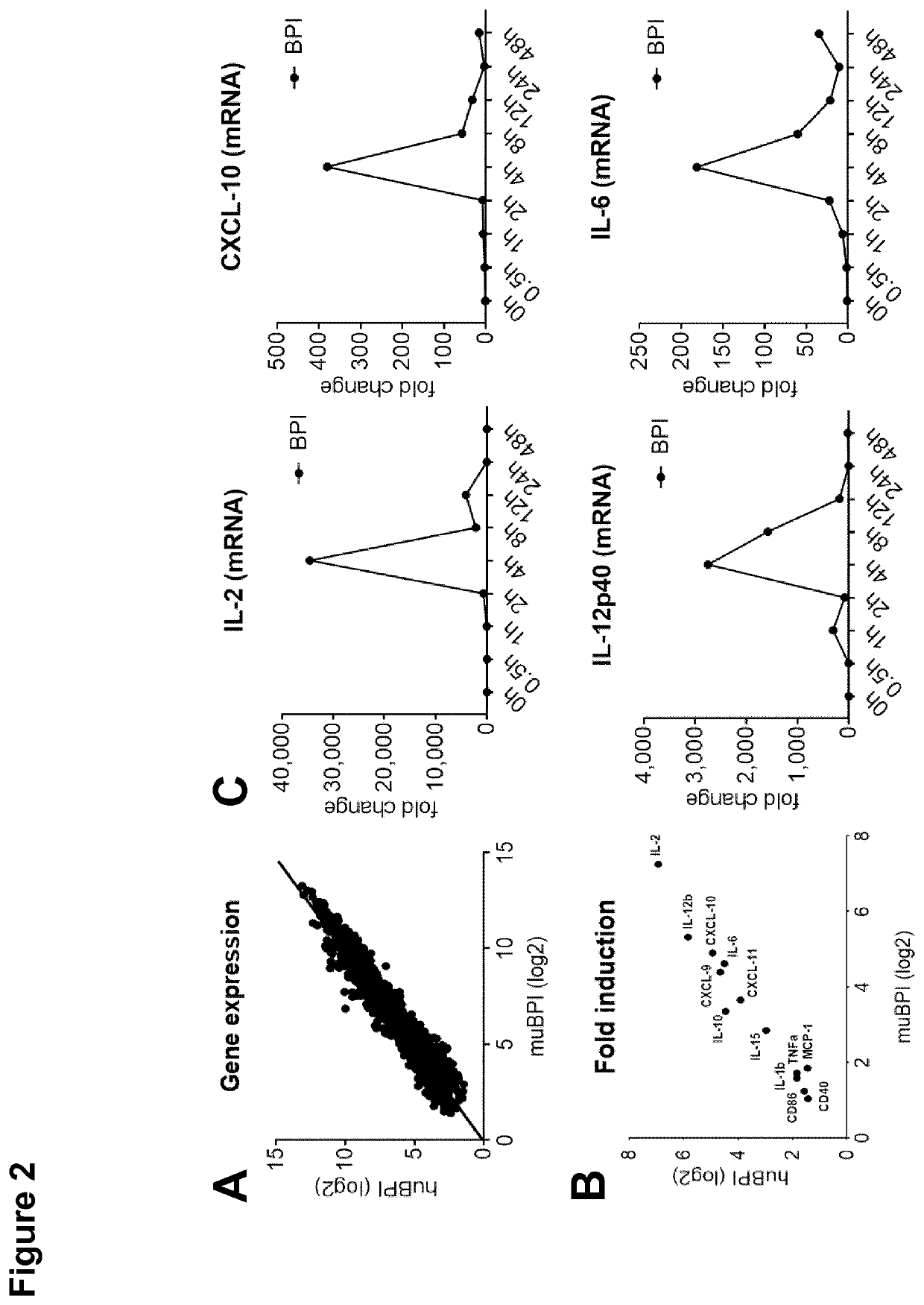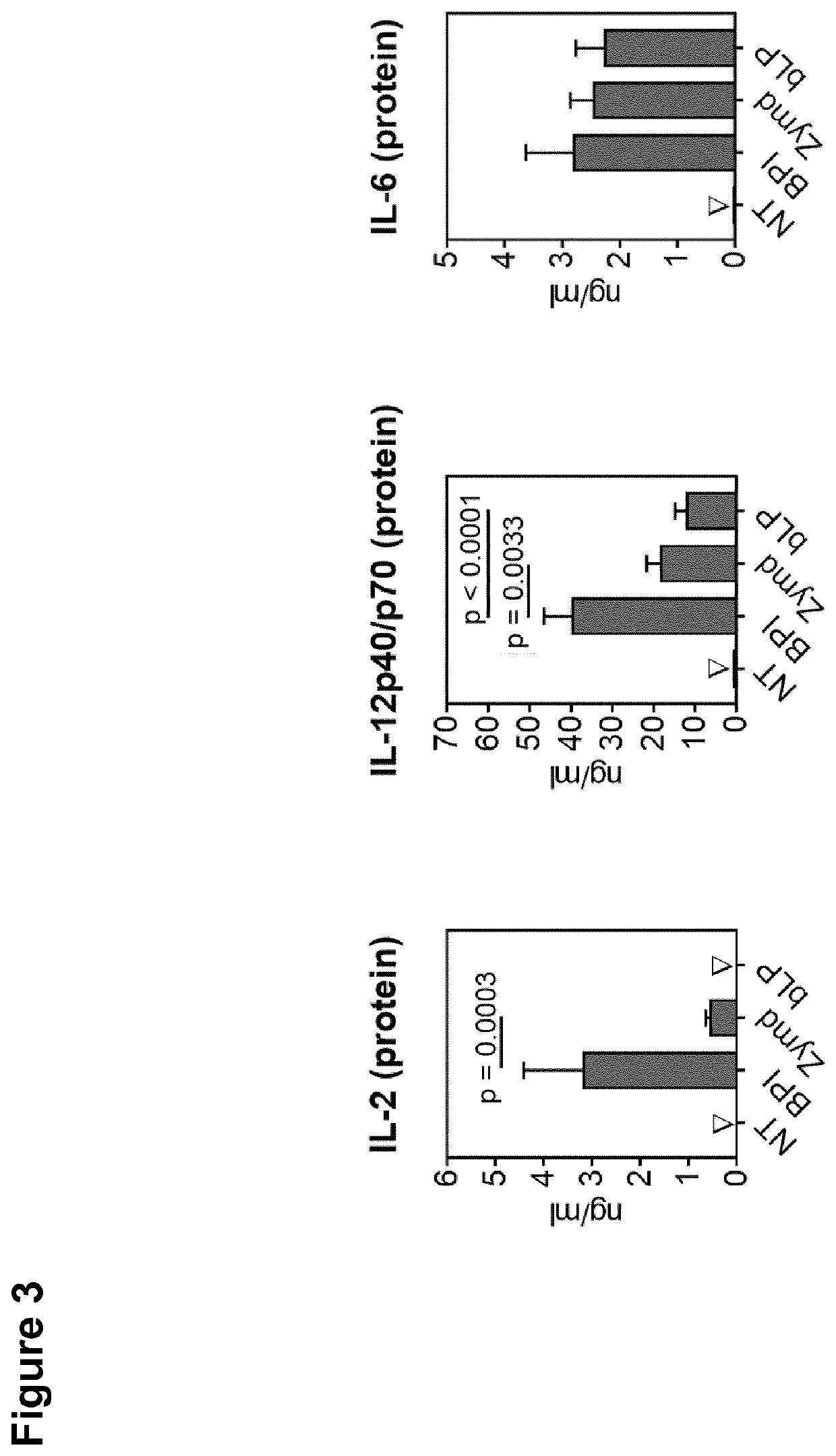Bactericidal/permeability increasing protein for use in a method of immunization, preferably as an adjuvant in a method of vaccination
a technology immunization method, which is applied in the field of permeability increasing protein for use in immunization, preferably as an adjuvant in the field of vaccination, can solve the problems of low immune response, unfavorable immunologically, and insufficient stimulation of immune cells for a single immunization agen
- Summary
- Abstract
- Description
- Claims
- Application Information
AI Technical Summary
Benefits of technology
Problems solved by technology
Method used
Image
Examples
example 1
[0171]BPI Upregulates Costimulatory Receptors / Maturation Markers in BMDCs
[0172]Generation of Recombinant Human BPI
[0173]A pCR3 vector (Invivogen) construct comprising an N-terminal HA signal peptide, aa32-487 of the huBPI respectively aa28-483 of muBPI, was transfected into HEK293T cells and used for the experiments after purification.
[0174]Generation of GM-CSF Derived Murine BMDCs
[0175]BMDCs were generated from the bone marrow of male C57BL / 6J mice at the age of approximately 3 to 7 months, which were bred under SPF conditions. BMDCs were generated as previously described [7]. BMDCs were harvested on day 7 by rinsing the dish in order to obtain the non-adherent and loosely-adherent cell fractions.
[0176]Cell Stimulation
[0177]5×104 BMDCs per well were seeded into a tissue-culture-treated 96-well plate in VLE-RPMI 1640 media (10% FCS, 10% Penicillin-Streptomycin, 50 μM β-Mercaptoethanol) and stimulated with 200 nM huBPI.
[0178]Fluorescence-Activated Cell Sorting (FACS)
[0179]BMDCs were ...
example 2
[0181]BPI Modulates Cytokine Gene Expression in BMDCs
[0182]All methods mentioned in this example were carried out as described in Example 1. BMDCs were seeded into a tissue-culture-treated 96-well plate in VLE-RPMI 1640 media (10% FCS, 10% Penicillin-Streptomycin, 50 μM β-Mercaptoethanol) and stimulated with 200 nM huBPI or muBPI. 4 h after stimulation, gene expression analysis was performed by microarray analysis (Affymetrix Mouse Gene 2.0 ST, FIGS. 2A and 2B).
[0183]Gene Expression Analyses (Quantitative Real-Time PCR)
[0184]Gene expression analyses using rtPCR were performed 30 min, 1 h, 2 h, 4 h, 8 h, 12 h, 24 h and 48 h after the stimulation.
[0185]After stimulation, cells were lysed and RNA was isolated using RNeasy® Mini Kit (#74106, Qiagen). Remaining DNA in the sample was digested using TURBO DNA-free™ Kit (#AM1907, ThermoFisher Scientific). Finally, the RNA concentration was measured with a NanoDrop 1000 (Thermo Scientific). The isolated RNA was transcribed into complementary...
example 3
[0188]BPI Modulates Cytokine Protein Secretion by BMDCs
[0189]All methods mentioned in this example were carried out as described in the preceding examples. Cells were stimulated with Zymosan depleted (Zymd, 5 μg / ml) from Invivogen (San Diego, Calif., USA) or (R)-Pam3CSK4 (bLP, 10 nM) from EMC Microcollections GmbH (Tübingen, Germany). Protein secretion analysis was performed using the supernatants.
[0190]Protein Quantification by Luminex Technology
[0191]To quantify the interleukin and chemokine protein-level after stimulation with huBPI, Zymd, and (R)-Pam3CSK4, a multiplex-system was used and determined by using the Luminex® technology (Austin, Tex., USA). The cytokines were captured with anti-mouse capture-antibodies and detected by biotinylated antibodies specific for the respective protein (Table 3). Protein concentrations were calculated using a reconstituted standard curve of the analyzed proteins (SM039, #LMC4031, Lot #1438354; Thermo Fisher Scientific; Standard Mix 1a, #EPX010...
PUM
| Property | Measurement | Unit |
|---|---|---|
| temperatures | aaaaa | aaaaa |
| temperatures | aaaaa | aaaaa |
| pH | aaaaa | aaaaa |
Abstract
Description
Claims
Application Information
 Login to View More
Login to View More - R&D
- Intellectual Property
- Life Sciences
- Materials
- Tech Scout
- Unparalleled Data Quality
- Higher Quality Content
- 60% Fewer Hallucinations
Browse by: Latest US Patents, China's latest patents, Technical Efficacy Thesaurus, Application Domain, Technology Topic, Popular Technical Reports.
© 2025 PatSnap. All rights reserved.Legal|Privacy policy|Modern Slavery Act Transparency Statement|Sitemap|About US| Contact US: help@patsnap.com



